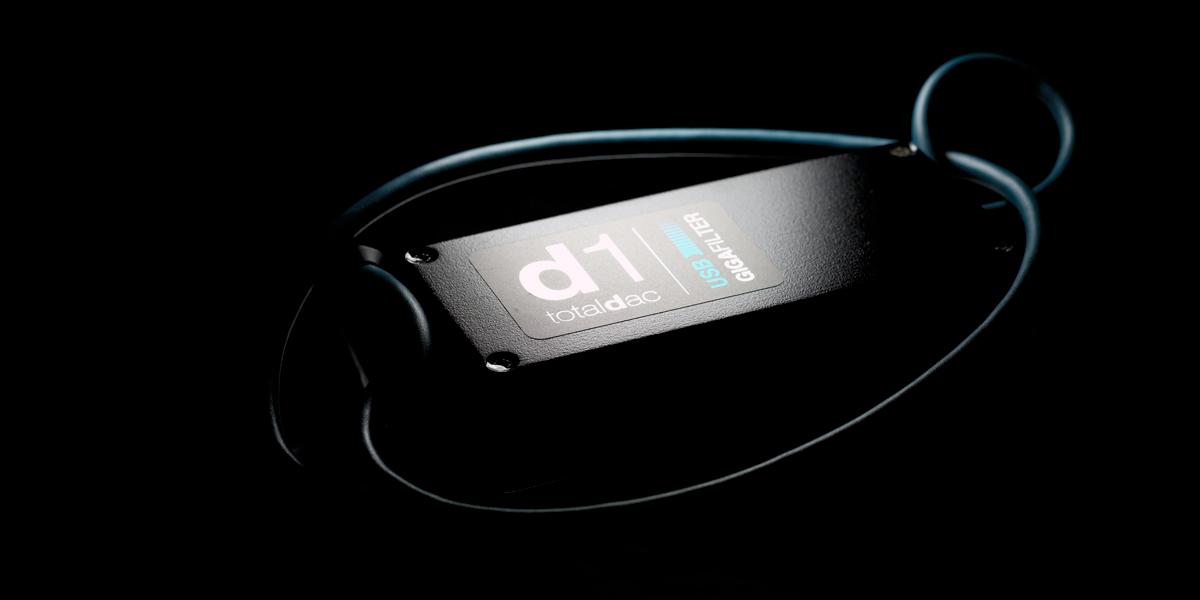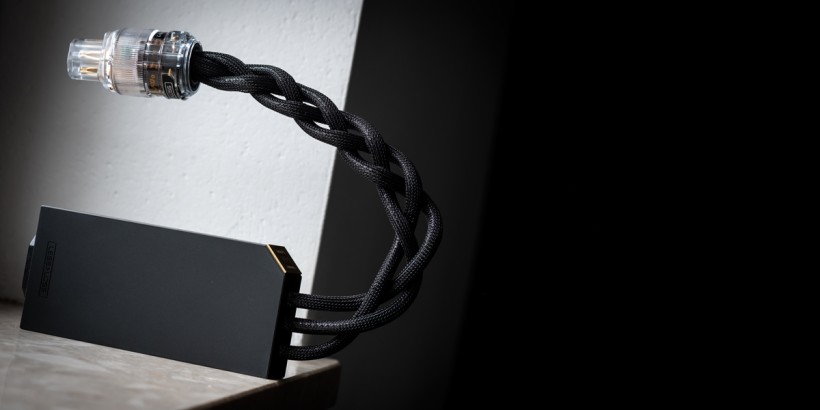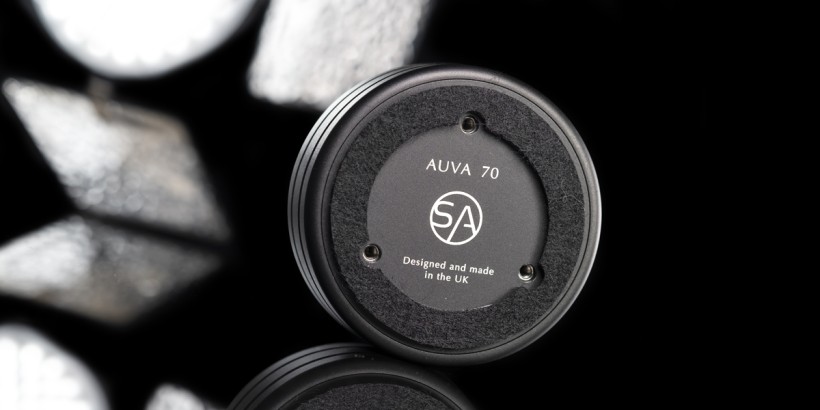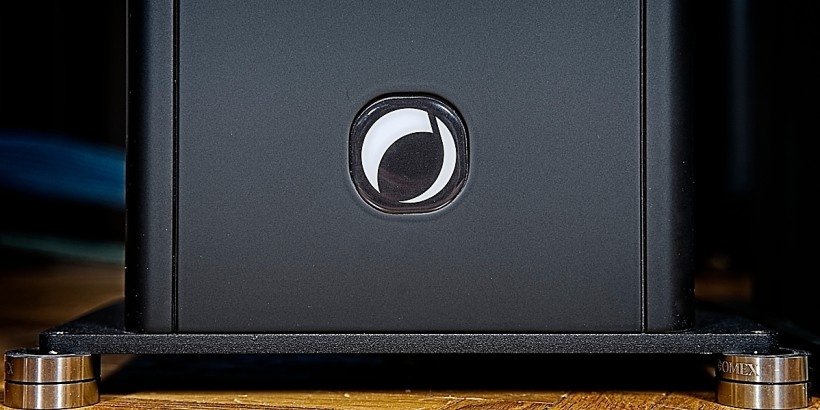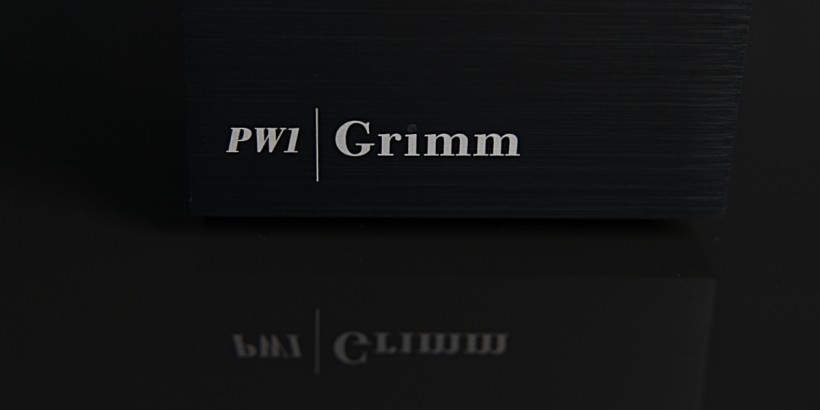For years TotalDAC has been considered as one of the most influential audio houses focused on digital. This manufacture’s owner and creator – Vincent Brient – became famous for his unusual D/A converters but is into USB related components as well and one such item – TotalDAC d1 GigaFilter – is this review’s main dish. Enjoy!
Introduction
The current TotalDAC offer is not ordinary though quite self-explanatory. Eight different D/A converters in Vincent Brient’s portfolio prove his dedication to digital audio brilliantly. To think about TotalDAC is to have these machines above all else on mind, although not exclusively any longer. The man himself showcased his d150 speakers during this year’s High End event in Munich and gained a lot of well-deserved attention as the sound in his room was subjectively very good. Shortly after I wondered how many individuals would take a closer look at Vincent’s products other than those related to his core business. I surely did, several interesting items were discovered in the process and one call plus two mails later this writing’s star was on its way to me via FedEX. That’s how it goes with Mr Brient. He acts fast, replies even faster and is straightforward, which made logistics between us a pleasant breeze. Kudos.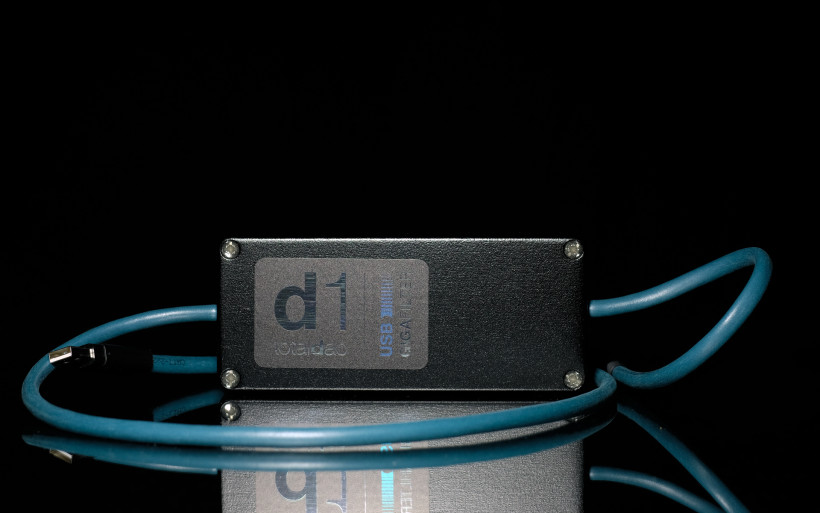 Unique topology and great sound quality make all TotalDAC’s D/A converters a treat to review and that’s what I originally aimed for. Vincent’s recently released d1-direct DAC with its R2R network married to analog outputs directly (thus with no typical output stage at all) is a very puristic design quite similar to this engineer’s well-known d1-twelve three-box TOTL affair, yet substantially reduced arrives in only one regularly sized enclosure plus a separate PSU. Now that’s as unusual as it’s interesting. Very. This costly newcomer was off the table and so was Vincent’s d150 due to obvious logistic difficulties and presumably staggering shipping cost. I hadn’t even asked about the latter, though was advised to take a look at other products. The safest bet seemed to be the man’s d1-server while the SOtM experience was still fresh, though the final pick turned out to be his latest USB sorter known as d1 GigaFilter. Petite, easy to handle and suspiciously costly, it piqued this reporter’s interest in an instant. The game was afoot.
Unique topology and great sound quality make all TotalDAC’s D/A converters a treat to review and that’s what I originally aimed for. Vincent’s recently released d1-direct DAC with its R2R network married to analog outputs directly (thus with no typical output stage at all) is a very puristic design quite similar to this engineer’s well-known d1-twelve three-box TOTL affair, yet substantially reduced arrives in only one regularly sized enclosure plus a separate PSU. Now that’s as unusual as it’s interesting. Very. This costly newcomer was off the table and so was Vincent’s d150 due to obvious logistic difficulties and presumably staggering shipping cost. I hadn’t even asked about the latter, though was advised to take a look at other products. The safest bet seemed to be the man’s d1-server while the SOtM experience was still fresh, though the final pick turned out to be his latest USB sorter known as d1 GigaFilter. Petite, easy to handle and suspiciously costly, it piqued this reporter’s interest in an instant. The game was afoot.
Build
Various USB tweaks I’ve had a pleasure to try over the years arrived as either small boxes or cables. The latter group’s input proved me more than once to be not only audible but also positive in my reference setup. Please take a look here and here. Cables are passive additions though, whereas USB reclockers are based on active circuitry. Just as their name suggests, these standalone products were designed to regenerate digital signal, thus strip it from jitter prior to its entry to a DAC’s receiver. Such additions oftentimes also provide clean 5V line and sort grounding related issues. Ground link is actually one of the vital ingredients of the USB standard and the source of potential trouble. Here galvanic isolators come into play. These tricky active buggers enable USB audio via isolated circuits minus noisy DC connection. Thus far I’ve heard only one product of the sort at my place – iFi audio iGalvanic3.0. In the context of my setup’s total value, this small Brit improved its sound quality audibly for pennies and has been a part of it ever since.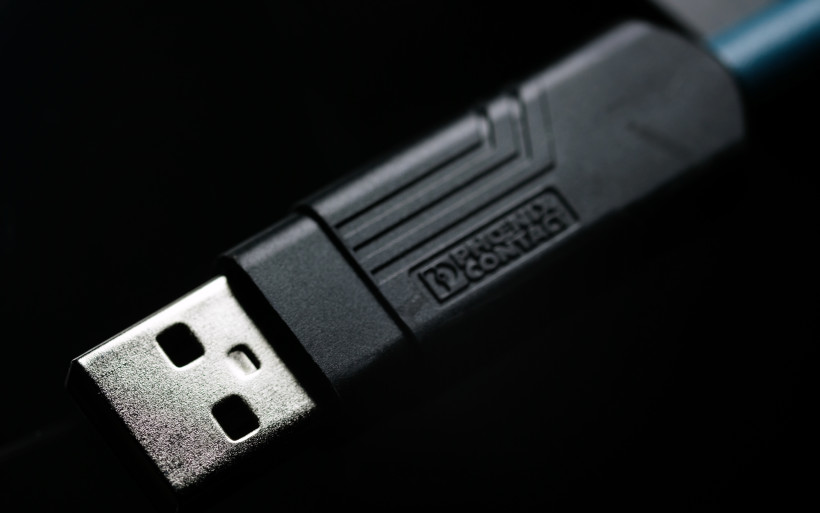 USB reclockers/regenerators are different from galvanic isolators and both need cables to work. But the important bit is that all these items operate in complementary fashion, their key tasks don’t overlap. That’s why in order to push the USB experience as far as possible, for months I’ve been rolling with everything at once; two small boxes and three USB leashes in-between. The view’s quite odd, to some hilarious even. Still, this visually excessive and surely messy chain turned out to be not only cost effective at my place, but sound quality improvement it introduced was not mild at all. This was possible also because of my laptop’s poor performance. In time this machine revealed itself as very susceptible to USB tweaks and to exploit this weakness was financially a far better idea than anything else. Instead of doing any significant and presumably costly moves, it simply made sense to tinker with USB in the one-box-at-a-time fashion.
USB reclockers/regenerators are different from galvanic isolators and both need cables to work. But the important bit is that all these items operate in complementary fashion, their key tasks don’t overlap. That’s why in order to push the USB experience as far as possible, for months I’ve been rolling with everything at once; two small boxes and three USB leashes in-between. The view’s quite odd, to some hilarious even. Still, this visually excessive and surely messy chain turned out to be not only cost effective at my place, but sound quality improvement it introduced was not mild at all. This was possible also because of my laptop’s poor performance. In time this machine revealed itself as very susceptible to USB tweaks and to exploit this weakness was financially a far better idea than anything else. Instead of doing any significant and presumably costly moves, it simply made sense to tinker with USB in the one-box-at-a-time fashion. Here’s where Vincent’s d1 GigaFilter comes into play. This product’s on-site description is very short. Since it’s not backed via any technical details or specs, many individuals would label it as yet another snake oil affair and be on their way. When asked what this item actually is, Vincent explained that it replaces USB cables, isolators, reclockers and suitable power supplies. More importantly it’s actually loaded with most if not all of these and active just as my daily drivers. Vincent’s latest USB box is also far less messy in comparison, it’s just one product after all. One enclosure with two short albeit fixed USB cables at each end is far easier to handle than two devices in-between three harnesses plus one PSU and occupies far less space on top of that. Space requirement is actually one of the most significant differences between TotalDAC’s d1 GigaFilter and iFi audio’s 3x Mercury3.0, iGalvanic3.0 and iUSB3.0 combo I roll with.
Here’s where Vincent’s d1 GigaFilter comes into play. This product’s on-site description is very short. Since it’s not backed via any technical details or specs, many individuals would label it as yet another snake oil affair and be on their way. When asked what this item actually is, Vincent explained that it replaces USB cables, isolators, reclockers and suitable power supplies. More importantly it’s actually loaded with most if not all of these and active just as my daily drivers. Vincent’s latest USB box is also far less messy in comparison, it’s just one product after all. One enclosure with two short albeit fixed USB cables at each end is far easier to handle than two devices in-between three harnesses plus one PSU and occupies far less space on top of that. Space requirement is actually one of the most significant differences between TotalDAC’s d1 GigaFilter and iFi audio’s 3x Mercury3.0, iGalvanic3.0 and iUSB3.0 combo I roll with.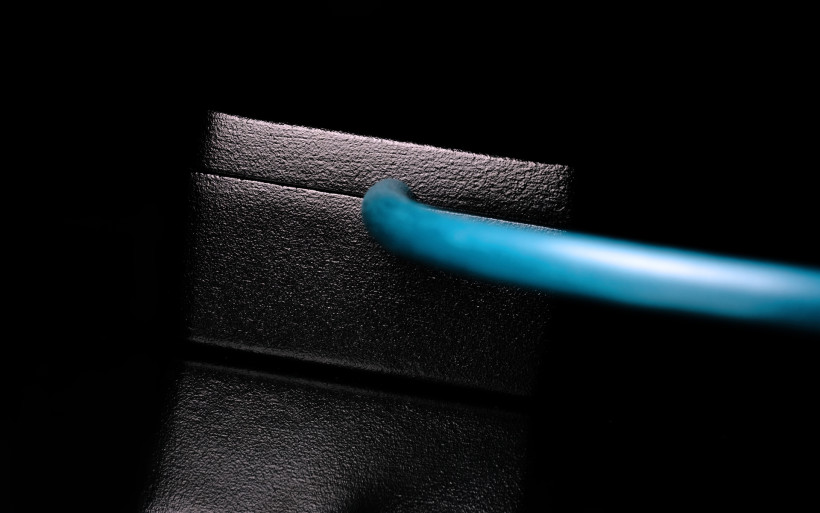 TotalDAC d1 GigaFilter measures (WxDxH) 60x145x35mm, weighs hefty 411g and feels pleasantly substantial. Its sandblasted aluminium chassis finished in black is the key element. The necessary circuitry is to be found inside yet taking a peek in there was off the table. At least not without any damage to the product as four screws responsible for holding the two enclosure pieces together were glued on purpose. Needless to say, I was in no rush to take this contraption apart. The box itself feels nice, looks quite regularly if not plain and sports a shiny sticker with the TotalDAC logo and the product’s name. Longer 0.75m cable finished with type A USB plug goes into one side of the box and the shorter (0.27m, type B) goes out on the other. Both are fixed, there’s no way to easily replace them. The cable itself is 0.7cm thick, soft once squeezed, was manufactured by Phoenix Contact and so were both connectors. My loaner’s total length is 1.2m, but 0.6m and 1.5m options are also available.
TotalDAC d1 GigaFilter measures (WxDxH) 60x145x35mm, weighs hefty 411g and feels pleasantly substantial. Its sandblasted aluminium chassis finished in black is the key element. The necessary circuitry is to be found inside yet taking a peek in there was off the table. At least not without any damage to the product as four screws responsible for holding the two enclosure pieces together were glued on purpose. Needless to say, I was in no rush to take this contraption apart. The box itself feels nice, looks quite regularly if not plain and sports a shiny sticker with the TotalDAC logo and the product’s name. Longer 0.75m cable finished with type A USB plug goes into one side of the box and the shorter (0.27m, type B) goes out on the other. Both are fixed, there’s no way to easily replace them. The cable itself is 0.7cm thick, soft once squeezed, was manufactured by Phoenix Contact and so were both connectors. My loaner’s total length is 1.2m, but 0.6m and 1.5m options are also available.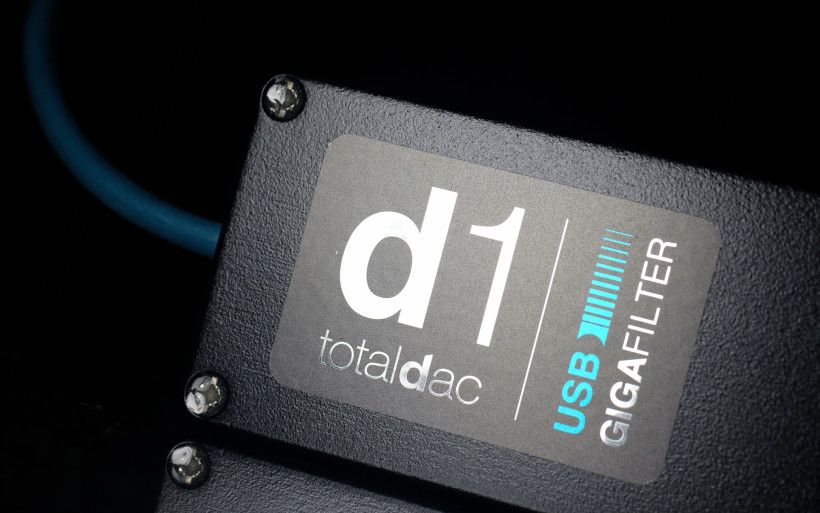 TotalDAC d1 GigaFilter was very easy to use, didn’t cause any issues along the road and operated in the completely plug&play fashion. With Vincent’s product in the chain, my laptop recognized the Polish DAC in an instant each and every time. The only thing I had to take into account was d1 GigaFilter’s mass. Too heavy to dangle freely, its black box had to sit on a flat surface in order to avoid potential damage of my DAC’s USB socket or the cable itself.
TotalDAC d1 GigaFilter was very easy to use, didn’t cause any issues along the road and operated in the completely plug&play fashion. With Vincent’s product in the chain, my laptop recognized the Polish DAC in an instant each and every time. The only thing I had to take into account was d1 GigaFilter’s mass. Too heavy to dangle freely, its black box had to sit on a flat surface in order to avoid potential damage of my DAC’s USB socket or the cable itself.
Sound
In order to review the TotalDAC d1 GigaFilter, Boenicke W8 speakers were used and so was English Trilogy 925 integrated amplifier. LampizatOr Pacific (KR Audio T-100 + KR Audio 5U4G Ltd. Ed.) handled the d/a conversion task and was fed via Asus UX305LA. This transport was hooked to the iGalvanic3.0 which fronted the iUSB3.0 and the latter then connected to my DAC directly. Three Mercury3.0 USB cables were used along the road; two of 0.5m length and one non-standard 0.1m shorty. All these USB items were made by iFi audio. The total value (+/-€1’650) of my USB chain is very similar to Vincent’s all-in-one solution, thus the initial agenda was very straightforward. The British team of five was stacked against one French and the most important matter to address early on was the magnitude of sorting service all this hardware provided. My daily drivers by iFi audio have been showcasing their potency for months and in their context, the TotalDAC d1 GigaFilter turned out to be of the same perfectly audible breed. This product revealed itself in its full glory very quickly, just as the British family did a good while ago. There was no need to switch back and forth between contestants endlessly in hope of hearing something audible enough to build a story around it, not at all. It became clear in an instant that Vincent’s machine was very much capable of the same highly beneficial stunts at my place as iFi’s hardware. Put shortly, the French was similarly efficient on many counts and it took yours truly a rather short while to fully grasp this, not hours. No focus mode had to be on, the outcome arrived literally right away and its obvious nature indicated clearly that Vincent did the USB job just right as well.
The total value (+/-€1’650) of my USB chain is very similar to Vincent’s all-in-one solution, thus the initial agenda was very straightforward. The British team of five was stacked against one French and the most important matter to address early on was the magnitude of sorting service all this hardware provided. My daily drivers by iFi audio have been showcasing their potency for months and in their context, the TotalDAC d1 GigaFilter turned out to be of the same perfectly audible breed. This product revealed itself in its full glory very quickly, just as the British family did a good while ago. There was no need to switch back and forth between contestants endlessly in hope of hearing something audible enough to build a story around it, not at all. It became clear in an instant that Vincent’s machine was very much capable of the same highly beneficial stunts at my place as iFi’s hardware. Put shortly, the French was similarly efficient on many counts and it took yours truly a rather short while to fully grasp this, not hours. No focus mode had to be on, the outcome arrived literally right away and its obvious nature indicated clearly that Vincent did the USB job just right as well. The rivals skirmished with a generic printer USB throwaway at first. This exercise conducted just for the sake of having a firm start somewhere proved to be rather pointless in both cases after merely one swap. Long story’s short, the USB hardware by the two manufacturers introduced not only very much alike, but also clearly audible and rather drastic improvements in comparison to the ordinary leash used early on. Quality increase on counts such as clarity, smoothness, grain amount, openness and accuracy left no room for guesswork. The British team and the French specimen covered aspects not directly related to music itself but addressed factors of additive nature instead, thus shared the same basal sound profile. This came as no surprise to be honest as USB tweaks usually behave like so. They operate in background, improve several small things all at once to paint more understandable, cleaner, subtler, tighter and livelier picture without any significant meta shifts, which translates to more enjoyable, refined and fatigue-free experience, hence something most enthusiasts are after. The more thorough USB sorting service is provided, the more obvious this effect is and its largely universal character is yet another upshot.
The rivals skirmished with a generic printer USB throwaway at first. This exercise conducted just for the sake of having a firm start somewhere proved to be rather pointless in both cases after merely one swap. Long story’s short, the USB hardware by the two manufacturers introduced not only very much alike, but also clearly audible and rather drastic improvements in comparison to the ordinary leash used early on. Quality increase on counts such as clarity, smoothness, grain amount, openness and accuracy left no room for guesswork. The British team and the French specimen covered aspects not directly related to music itself but addressed factors of additive nature instead, thus shared the same basal sound profile. This came as no surprise to be honest as USB tweaks usually behave like so. They operate in background, improve several small things all at once to paint more understandable, cleaner, subtler, tighter and livelier picture without any significant meta shifts, which translates to more enjoyable, refined and fatigue-free experience, hence something most enthusiasts are after. The more thorough USB sorting service is provided, the more obvious this effect is and its largely universal character is yet another upshot. All USB related hardware listed in this review sported the same features and proved to be audibly potent to a similar degree, that’s the important part. Yet things got more interesting and intense once the two manufacturers’ representatives were directly put up against each other. I can’t explain why, but they turned out to be not alike on several counts. The iFi team sang leaner, a bit more expansively, with slightly wider soundstage and high FR served in more suave and calmer fashion. It in general sounded posher. TotalDAC d1 GigaFilter showcased more explosive and energetic downstairs approach with deeper reach and beefier attitude in general. The latter was flashier, more substantial and direct, whereas the former played it cooler, gentler and a tad smoother upstairs. Different strokes for different folks then? Quite, though of the same quality level nonetheless.
All USB related hardware listed in this review sported the same features and proved to be audibly potent to a similar degree, that’s the important part. Yet things got more interesting and intense once the two manufacturers’ representatives were directly put up against each other. I can’t explain why, but they turned out to be not alike on several counts. The iFi team sang leaner, a bit more expansively, with slightly wider soundstage and high FR served in more suave and calmer fashion. It in general sounded posher. TotalDAC d1 GigaFilter showcased more explosive and energetic downstairs approach with deeper reach and beefier attitude in general. The latter was flashier, more substantial and direct, whereas the former played it cooler, gentler and a tad smoother upstairs. Different strokes for different folks then? Quite, though of the same quality level nonetheless.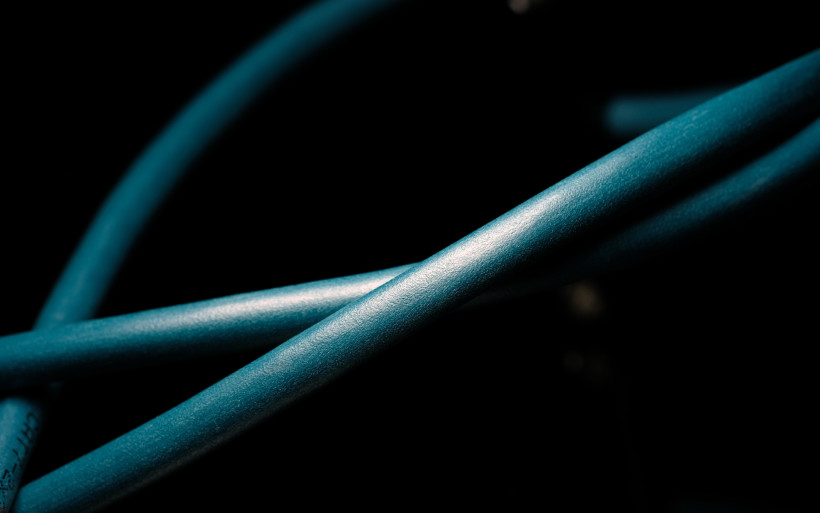 The described differences between the rivals weren’t big yet audible and I wasn’t able to cherry-pick one universal solution. Eventually it all came down to repertoire. With rock, metal and synthetic bass involved, I appreciated what the hotter and snappier French provided, whereas the Brits did a spot on job once gentler tracks based on acoustic instruments were auditioned. These were my subjective choices though and each USB chain proved me to be perfectly fit to handle every musical task with ease. There were no bad choices involved. Past several days long listening time and countless switches back and forth, I enjoyed both audio houses’ goods thoroughly because their very similar sonic groundwork ticked off the same mandatory checkboxes, thus elevated the outcome substantially where they should.
The described differences between the rivals weren’t big yet audible and I wasn’t able to cherry-pick one universal solution. Eventually it all came down to repertoire. With rock, metal and synthetic bass involved, I appreciated what the hotter and snappier French provided, whereas the Brits did a spot on job once gentler tracks based on acoustic instruments were auditioned. These were my subjective choices though and each USB chain proved me to be perfectly fit to handle every musical task with ease. There were no bad choices involved. Past several days long listening time and countless switches back and forth, I enjoyed both audio houses’ goods thoroughly because their very similar sonic groundwork ticked off the same mandatory checkboxes, thus elevated the outcome substantially where they should.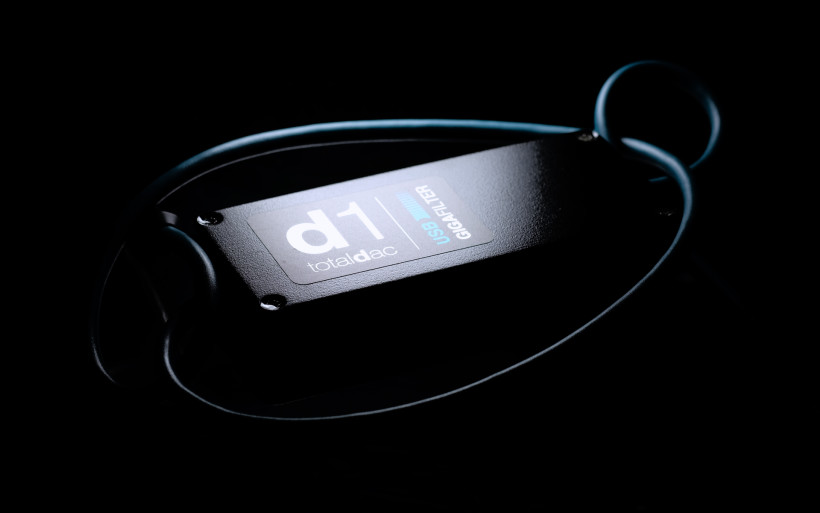 The most surprising thing for me personally were audible differences between both USB setups aside their basic virtues and overall quality. Similar if not the same input in each case was the early assumption and to a great degree it was indeed. But the sound served in two distinct ways caught me off guard. Once this knowledge was acquired, the contestants weren’t seen as efficient and similar USB sorters exclusively but also tools capable of shifting music slightly in a desired direction. Let me point out again that my reference setup very susceptible to USB tweaks morphed this assignment into quite the enjoyable and easygoing adventure. Still, it’s not for me to say whether a similar story would’ve occurred at your place as your rig’s USB immunity undoubtedly plays the important part. To dig a bit deeper into this subject, please take a look here. In any case, both audio houses provide generous return policy, which makes potential test drive easy and to exploit this option is a solid plan surely worth the effort.
The most surprising thing for me personally were audible differences between both USB setups aside their basic virtues and overall quality. Similar if not the same input in each case was the early assumption and to a great degree it was indeed. But the sound served in two distinct ways caught me off guard. Once this knowledge was acquired, the contestants weren’t seen as efficient and similar USB sorters exclusively but also tools capable of shifting music slightly in a desired direction. Let me point out again that my reference setup very susceptible to USB tweaks morphed this assignment into quite the enjoyable and easygoing adventure. Still, it’s not for me to say whether a similar story would’ve occurred at your place as your rig’s USB immunity undoubtedly plays the important part. To dig a bit deeper into this subject, please take a look here. In any case, both audio houses provide generous return policy, which makes potential test drive easy and to exploit this option is a solid plan surely worth the effort.
Summary
Vincent Brient did a fabulous job with his d1 GigaFilter and there’s no question about it in my mind. This visually very much vanilla-flavoured box on a leash might be seen as a snake oil case, whereas in reality it’s anything but. Devices this efficient don’t happen by accident, are made by engineers deep in the know instead and Vincent’s been one of them for years. He surely knows his onions and TotalDAC d1 GigaFilter is yet another proof.
TotalDAC d1 GigaFilter is expensive, holds no jewelry status and as such it’ll be viewed as unimpressive by individuals into bling. Personally I couldn’t care less. USB related items are no goods to gush over. As long as they work as intended and are reliably assembled we’re good, thus TotalDAC known for well executed yet utilitarian lookers sports attitude perfectly acceptable in my book.
Although voiced differently, the British team and the French nailed sound fundamentals in the same fashion, as equally efficiently and for the same coin. The choice between the two narrows down to long term needs and the thrill of the hunt itself then. In case of iFi audio one can start with just a single affordable item and gradually move upwards to potentially end up with a costly albeit messy setup like mine, whereas similarly expensive though easier on the on-shelf space TotalDAC d1 GigaFilter acts the exact opposite to shorten the trip and take one to the destination place right away. Each of these two different approaches is valid. But most importantly, this impressive French box was perfectly able to keep up with the iFi audio’s gang of five, thus should be taken into serious account and auditioned. It honestly might reveal itself as a keeper. ‘Till next time!
Associated equipment:
- Amplifier: Trilogy 925
- Sources: Lampizator Pacific (KR Audio T-100 DHTs + KR Audio 5U4G Ltd. Ed.)
- Speakers: Boenicke Audio W8
- Transports: Asus UX305LA
- USB components: iFi audio iGalvanic3.0, iUSB3.0, 3x Mercury3.0
- Speaker cables: Forza AudioWorks Noir Concept, Audiomica Laboratory Celes Excellence
- Interconnects: Forza AudioWorks Noir, Audiomica Laboratory Erys Excellence
- Power supply: Gigawatt PF-2 + Gigawatt LC-2 MK2 + Forza AudioWorks Noir Concept/Audiomica Laboratory Ness Excellence
- Rack: Franc Audio Accesories Wood Block Rack
- Music: NativeDSD
Retail prices of reviewed components in EU (excl. tax):
- TotalDAC d1 GigaFilter: €1’750
Manufacturer: Totaldac



